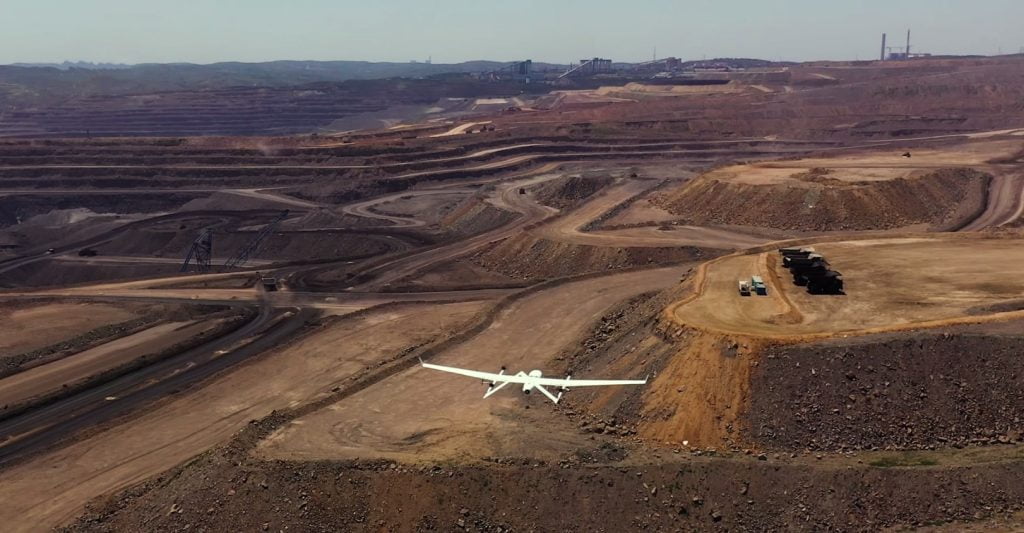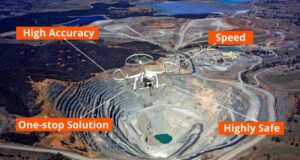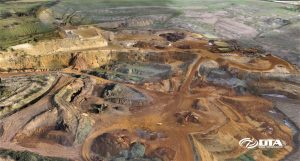In recent years, the mining industry in India has seen a significant shift towards adopting innovative technologies to enhance productivity, safety, and efficiency. One such groundbreaking advancement is the integration of drones, or Unmanned Aerial Vehicles (UAVs), into mining operations. Mining drones have revolutionized how aerial surveys for mining are conducted, providing unparalleled benefits that are reshaping the industry’s landscape.
The Rise of Mining Drones in India
India, with its vast mineral resources and extensive mining operations, stands to benefit immensely from drone technology. The adoption of mining drones has been driven by the need for precise data collection, improved safety, and cost-effective solutions. These drones are equipped with high-resolution cameras, LiDAR sensors, and other advanced equipment, enabling them to capture detailed aerial imagery and data of mining sites.
Benefits of Drone Mining in India
1. Enhanced Safety and Risk Mitigation
Mining is inherently a high-risk industry, with workers often exposed to hazardous conditions. Mining drones significantly mitigate these risks by allowing remote monitoring and inspection of sites. Instead of sending personnel into potentially dangerous areas, drones can be deployed to capture detailed data, reducing the risk of accidents and ensuring worker safety.
2. Accurate and Efficient Aerial Surveys
Aerial surveys for mining using drones offer unparalleled accuracy and efficiency. Traditional surveying methods are time-consuming and often prone to errors. In contrast, drones can cover large areas quickly, capturing high-resolution images and generating precise maps and models. This accuracy is crucial for planning, resource estimation, and operational decision-making.
3. Cost-Effectiveness
Mining operations involve substantial costs, from labor to equipment and maintenance. Integrating drones into these operations can lead to significant cost savings. Drones reduce the need for expensive surveying equipment and personnel, streamline data collection processes, and minimize downtime. These cost benefits are particularly valuable in a price-sensitive market like India.
4. Real-Time Data and Monitoring
Mining drone provide real-time data and monitoring capabilities, enabling mine operators to make informed decisions swiftly. This real-time insight is invaluable for assessing site conditions, tracking progress, and addressing potential issues promptly. It enhances overall operational efficiency and helps optimize resource utilization.
5. Environmental Impact Assessment
Environmental sustainability is a growing concern in the mining industry. Mining drones can play a pivotal role in conducting environmental impact assessments. By capturing detailed aerial imagery, drones help monitor vegetation, water bodies, and land use changes around mining sites. This data is crucial for ensuring compliance with environmental regulations and minimizing the ecological footprint of mining activities.
Applications of Mining Drones in India
1. Site Exploration and Mapping
Before mining operations commence, thorough site exploration and mapping are essential. Mining drones excel in this phase by providing comprehensive aerial surveys of potential sites. They capture high-resolution images and generate 3D models, aiding in the assessment of mineral deposits and planning the layout of mining activities.
2. Stockpile Management
Efficient stockpile management is crucial for optimizing inventory and resource utilization. Drones equipped with LiDAR sensors can accurately measure stockpile volumes, track inventory levels, and monitor changes over time. This ensures that resources are effectively managed and reduces the risk of material shortages or excesses.
3. Infrastructure Inspection
Mining sites often involve extensive infrastructure, including roads, conveyor belts, and processing plants. Regular inspection and maintenance of these structures are vital for smooth operations. Drones can conduct detailed inspections of infrastructure, identifying potential issues such as cracks, corrosion, or wear and tear. This proactive approach helps prevent costly downtime and ensures the longevity of mining assets.
4. Blast Planning and Monitoring
Blast planning and monitoring are critical for efficient resource extraction in open-pit mining. Drones equipped with specialized sensors can capture pre-blast and post-blast data, providing insights into blast effectiveness and fragmentation. This data helps optimize blast designs, minimize waste, and enhance overall productivity.
Challenges and Future Prospects
While the benefits of mining drones are substantial, their adoption in India faces certain challenges. Regulatory hurdles, limited awareness, and the need for skilled operators are some of the barriers that need to be addressed. However, with the government’s push towards digitalization and technological advancement, these challenges are gradually being overcome.
The future of mining drones in India looks promising. As technology evolves, drones will become even more capable and versatile. Integration with artificial intelligence and machine learning will enhance their data analysis capabilities, providing deeper insights and predictive analytics for mining operations.
Conclusion
Mining drones are transforming the landscape of the mining industry in India. Their ability to conduct accurate aerial surveys for mining, improve safety, reduce costs, and provide real-time data is revolutionizing mining operations. As the industry continues to embrace these advancements, mining drones will play an increasingly pivotal role in driving efficiency, productivity, and sustainability in Indian mining.
By harnessing the power of drone technology, India is poised to set new benchmarks in the global mining industry, ensuring a safer, more efficient, and environmentally responsible future.



